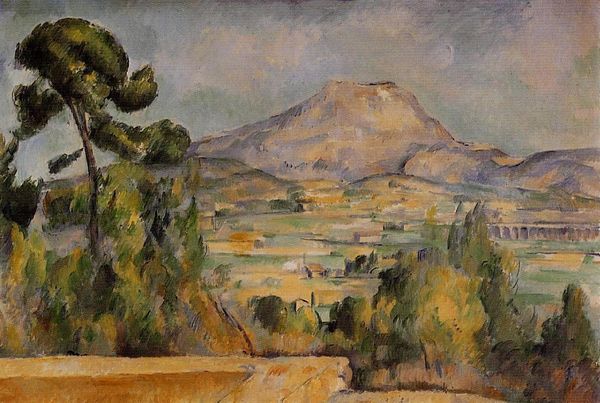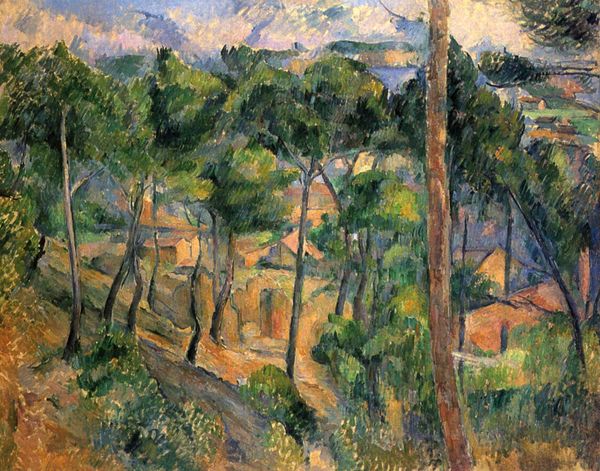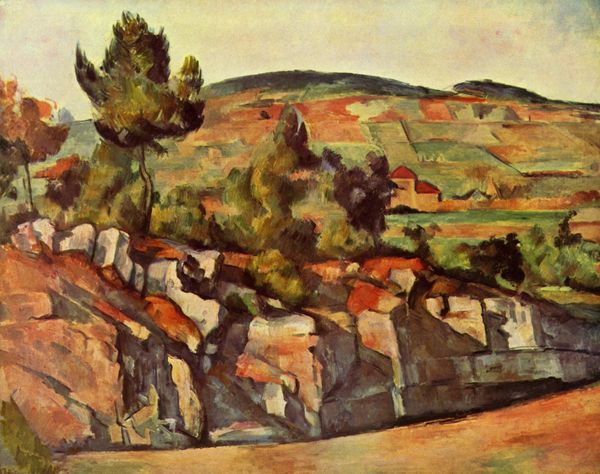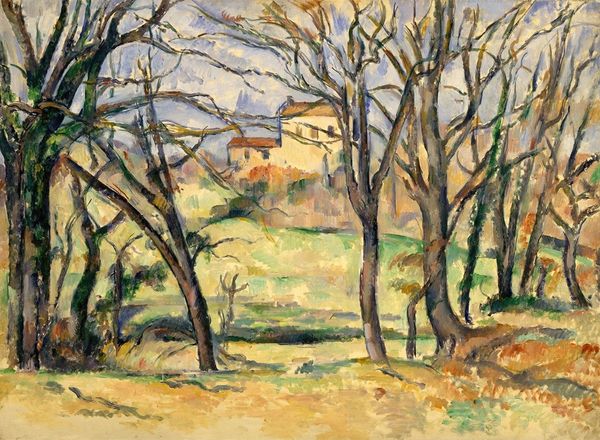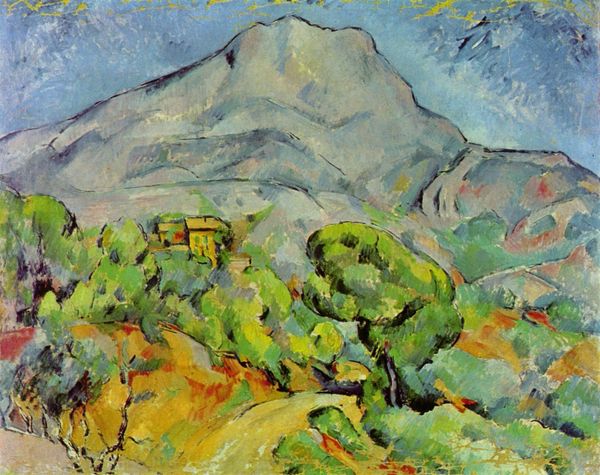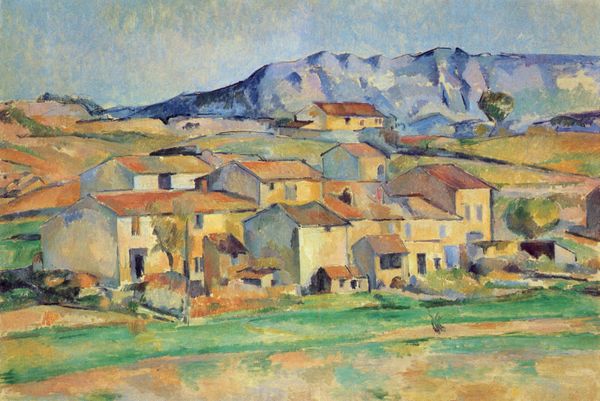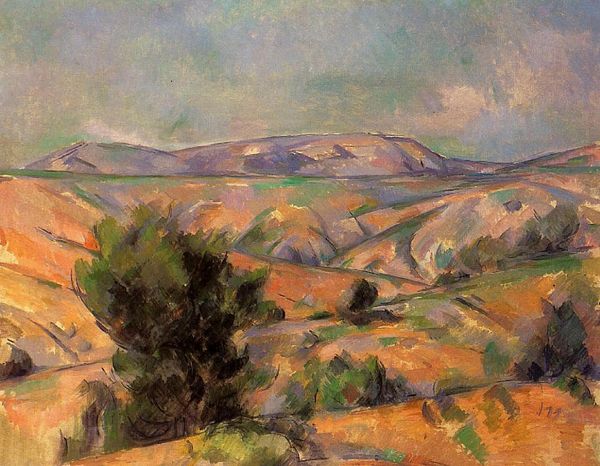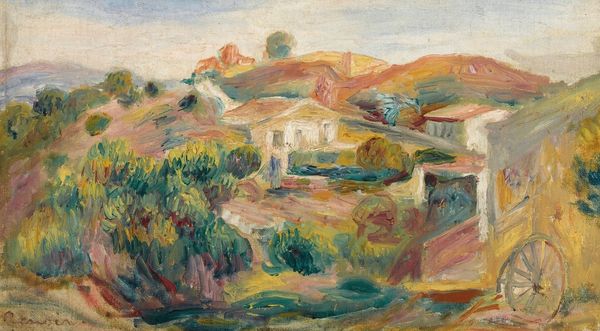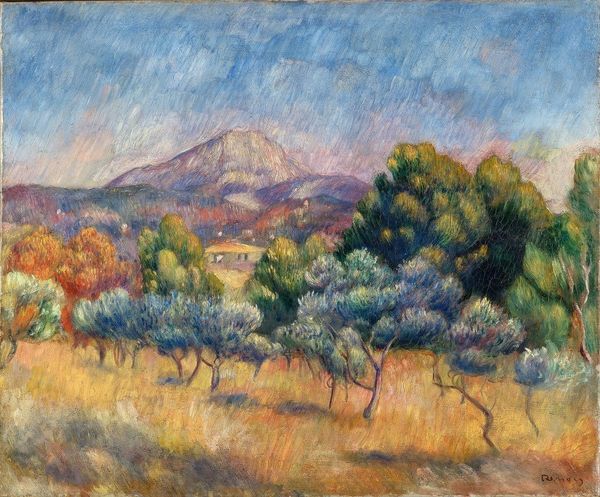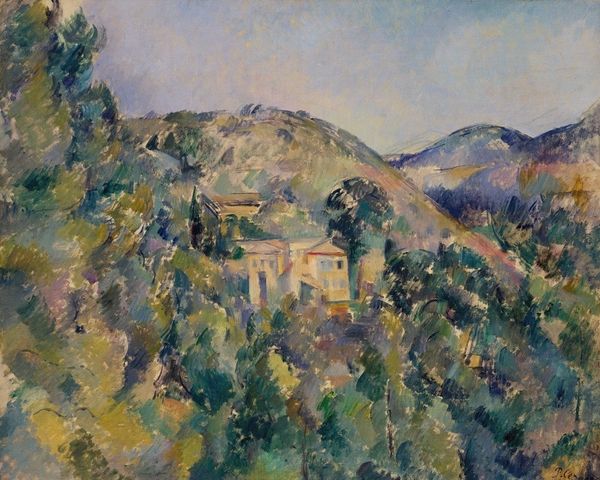
painting, plein-air, oil-paint
#
painting
#
impressionism
#
plein-air
#
oil-paint
#
landscape
#
perspective
#
impressionist landscape
#
nature
#
oil painting
#
geometric
#
cityscape
#
post-impressionism
#
natural environment
#
modernism
Copyright: Public Domain: Artvee
Editor: Here we have Cézanne’s “Mont Sainte-Victoire and the Viaduct of the Arc River Valley,” painted sometime between 1882 and 1885. The fractured brushstrokes feel so modern, but it’s interesting seeing nature juxtaposed with this man-made viaduct. What strikes you about this piece? Curator: It's the materiality that grabs me. Look at the way Cézanne applies paint: thick, almost sculptural. It speaks to the sheer labor of art-making, doesn't it? We often overlook the physical process, but here, the material itself is foregrounded. Consider the viaduct: what's its purpose? Transportation. It’s about movement of goods and people. Cézanne is embedding industry within the landscape. Editor: That's a great point. The thick application of paint contrasts so much with the smoothness you'd expect in a viaduct. So is Cézanne, by depicting the materiality of painting, commenting on the industrialized world, then? Curator: Precisely! Think about the shift from agrarian societies to industrial ones at that time. This image captures the shift—nature meeting industry. How does Cézanne's technique play into that? The broken brushstrokes feel almost like things falling apart. The painting's materials and methods aren't separate from this social change—they are a reaction. Editor: That's fascinating! I never thought about it that way before. So, analyzing the materials gives a different understanding of Cézanne's artistic intent. Curator: Exactly! It grounds art in its physical reality, rather than some abstract idea. Thinking materially, we move beyond just aesthetics and start asking about production, labor, and the artist’s engagement with the evolving socio-economic landscape. Editor: I learned so much. Thanks, approaching this work by exploring materiality made this so enriching. Curator: My pleasure! Looking at art through the lens of materials opens up so many fascinating questions.
Comments
No comments
Be the first to comment and join the conversation on the ultimate creative platform.
